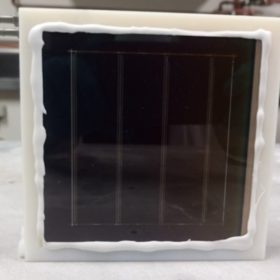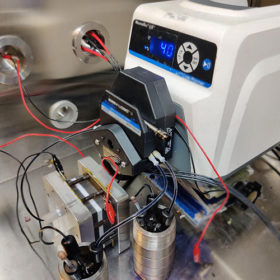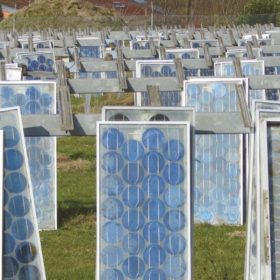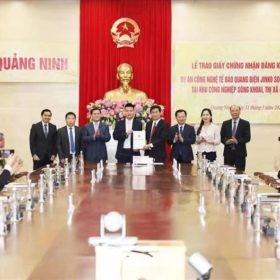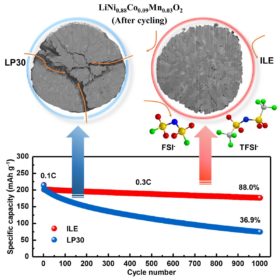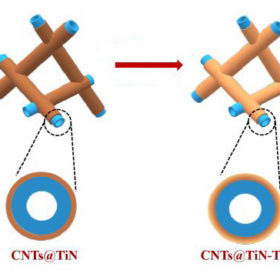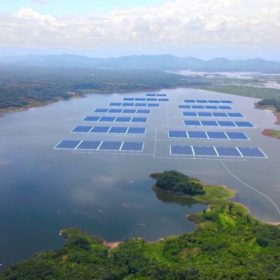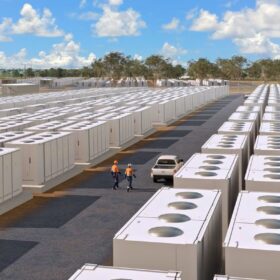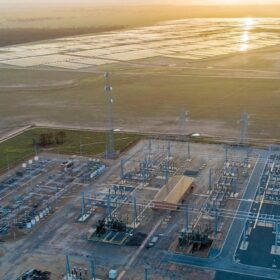Coupling PV-powered electrochemical water splitting with battery storage
A German research team has developed a photovoltaic-electrochemical device for alkaline water electrolysis that can be linked to battery storage. The proposed system configuration can not only smoothen out the PV power fluctuations and facilitate power coupling, but also improve solar to hydrogen efficiency.
Redox flow battery retains more than 90% of capacity over 6,000 cycles via new catholyte
The battery was built with a new catholyte and a symmetry-breaking strategy, which consists of changing the symmetry of the redox-active organic molecules instead of using the common approach of attaching a hydrophilic functional group.
Novel PV module recycling tech from South Korea
Developed by the Korea Institute of Energy Research (KIER), the “non-destructive” technology is claimed to enable the recovery of 100% of a module’s glass and to allow the reuse of silicon for producing new solar cells with an efficiency of 20.05%.
Blockchain for PV module recycling
Next Energy and Marubeni are developing a blockchain tech for PV module inspection – with the support of the Japanese government – which they claim is able to provide data on a panel’s traceability and components as well as verifying that the data were not modified or tampered with.
JinkoSolar builds 7 GW wafer factory in Vietnam
The new factory should begin production within six months and serve the company’s cell and module assembly factories in Malaysia, as well as the module assembly facility in the United States.
Lithium-metal battery with capacity retention of 88% over 1000 cycles
German scientists have applied a new combination of cathodes and electrolytes to improve the stability of lithium-metal batteries. They fabricated a device with an energy density of 560 watt-hours per kilogram and a Coulombic efficiency of 99.94%.
Blue is not the new green
A new study from Stanford University and Cornell University shows that blue hydrogen can produce more greenhouse emissions than heat produced by coal and gas. The modelling classifies blue hydrogen emissions as carbon dioxide and unburned fugitive methane, as well as lifecycle emissions linked to the mining, transport, storage, and use of methane.
Lithium-sulfur battery with shorter charging time, longer lifespan
Japanese scientists have developed a new lithium-sulfur battery by using titanium oxide and titanium nitride to prevent the formation of polysulfides during the fabrication process. This allows the battery to retain 85% of its capacity after 500 cycles at 2 C.
Work begins on 145 MW floating solar plant in Indonesia
South-East Asia’s biggest floating PV installation is under construction by Masdar and Indonesian energy company PT PJB. The two companies secured a PPA for the project with state electricity company Perusahaan Listrik Negara (PLN) in January 2020. The agreed tariff is US$0.0581/kWh.
Ever heard of photovoltachromics, the new tech for solar windows?
Researchers in China have developed a smart solar window tech based on a photovoltachromic device that is able to achieve a high pristine transmittance and to be self-adaptable to control indoor brightness and temperature. The device was assembled via a full solution process in an architecture incorporating glass, a fluorine-doped tin oxide (FTO) layer, a perovskite-based PV cell, an electrochromic gel, another FTO layer, and glass.

